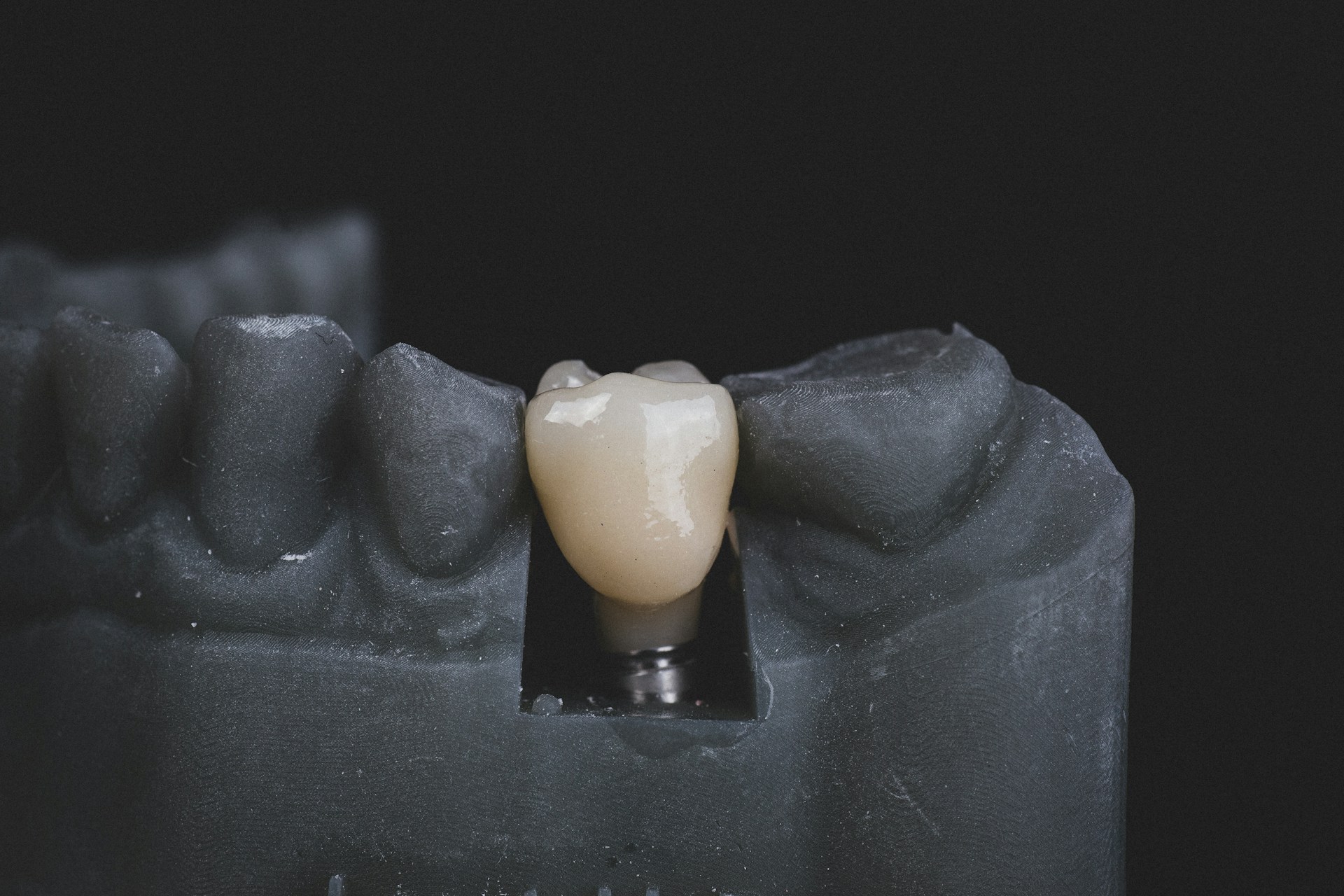Now Reading: Restore Your Smile: The Science Behind Permanent Tooth Replacement
-
01
Restore Your Smile: The Science Behind Permanent Tooth Replacement
Restore Your Smile: The Science Behind Permanent Tooth Replacement

When you lose a tooth, the impact extends far beyond appearance. Your ability to chew properly diminishes, adjacent teeth begin shifting, and bone loss accelerates in the jaw. While temporary solutions like bridges and dentures have served patients for decades, modern restorative dentistry offers a revolutionary approach that addresses these challenges at their source.
Advanced tooth replacement technology has transformed how dental professionals restore missing teeth, providing patients with solutions that look, feel, and function like natural teeth. This comprehensive approach not only restores your smile but also preserves your oral health for decades to come.
Understanding your options for permanent tooth restoration can help you make an informed decision that will benefit your oral health, confidence, and quality of life for years ahead.
The Foundation of Modern Tooth Restoration
Dental implants represent the gold standard in contemporary tooth replacement technology. Unlike traditional solutions that sit on top of your gums or rely on adjacent teeth for support, this approach recreates the entire tooth structure from root to crown.
The process begins with a small titanium post surgically placed into your jawbone. This biocompatible material naturally fuses with your bone tissue through a process called osseointegration, creating a stable foundation that mimics your natural tooth root. Once healing is complete, a custom-designed crown is attached to restore full function and appearance.
How Titanium Integration Works
The science behind successful implant integration relies on titanium’s unique properties. Your body recognizes titanium as biocompatible, allowing bone cells to grow directly onto the implant surface. This biological process typically takes three to six months, during which the implant becomes permanently anchored in your jaw.
This integration process is crucial because it maintains the natural stimulation your jawbone needs to stay healthy. When you chew with an implant-supported tooth, the force transfers through the titanium post to the surrounding bone, preventing the deterioration that occurs with missing teeth.
Why Bone Health Matters in Tooth Replacement
Your jawbone requires constant stimulation to maintain its density and structure. Natural tooth roots provide this stimulation through normal chewing forces. When a tooth is lost, the bone in that area begins to deteriorate within months.
Traditional tooth replacement options don’t address this underlying problem. Bridges rely on adjacent teeth for support, while dentures rest on your gums without providing bone stimulation. Over time, this leads to:
- Facial structure changes: Bone loss causes a sunken appearance around the mouth
- Adjacent tooth problems: Neighboring teeth drift into empty spaces
- Functional limitations: Reduced chewing efficiency affects nutrition and digestion
- Progressive deterioration: Bone loss accelerates over time without intervention
The Comprehensive Solution Advantage
Modern implant systems address these issues by replacing both the root and crown portions of missing teeth. This complete restoration:
- Preserves jawbone density through natural stimulation
- Maintains proper spacing between remaining teeth
- Restores full chewing function and efficiency
- Provides long-term stability without affecting adjacent teeth
Comparing Your Tooth Replacement Options
Understanding the differences between available treatments helps you make an informed decision about your oral health investment.
Traditional Bridges
Dental bridges connect crowns placed on adjacent teeth to support a replacement tooth in the middle. While effective for restoring appearance and basic function, bridges require altering healthy neighboring teeth and typically need replacement every 10-15 years.
Advantages:
- Faster initial treatment time
- Lower upfront cost
- Immediate restoration of appearance
Limitations:
- Requires alteration of healthy adjacent teeth
- Doesn’t prevent bone loss
- May complicate oral hygiene
- Limited lifespan requires eventual replacement
Removable Dentures
Partial or complete dentures replace multiple missing teeth with removable prosthetics. While dentures can restore basic function and appearance, they don’t provide the stability and comfort of permanently anchored solutions.
Advantages:
- Non-surgical option
- Can replace multiple teeth simultaneously
- Lower initial investment
Limitations:
- May slip or click during eating or speaking
- Requires regular adjustments as the bone changes
- Doesn’t prevent jawbone deterioration
- Dietary restrictions due to reduced chewing efficiency
Implant-Supported Restoration
This approach provides the most comprehensive solution by replacing the entire tooth structure and preserving surrounding oral health.
Advantages:
- Permanent, stable solution
- Preserves jawbone health
- Doesn’t affect adjacent teeth
- Provides a natural chewing function
- Longest-lasting option available
Considerations:
- Requires a surgical procedure
- Longer treatment timeline
- Higher initial investment
- May require bone grafting in some cases
The Treatment Process: What to Expect
Understanding the implant placement process helps you prepare for treatment and set realistic expectations for your restoration journey.
Initial Consultation and Planning
Your treatment begins with a comprehensive examination using advanced imaging technology. Three-dimensional CT scans allow your dental team to evaluate bone density, identify optimal implant placement sites, and plan your procedure with precision.
During this appointment, your dentist will:
- Assess your overall oral health
- Review your medical history
- Discuss treatment options and timelines
- Create a customized treatment plan
- Address any questions or concerns
Surgical Placement Phase
The implant placement procedure is typically performed under local anesthesia in your dentist’s office. Most patients report minimal discomfort during the procedure, which usually takes 60-90 minutes per implant.
Your surgeon will:
- Create a small access site in your gum tissue
- Prepare the implant site in your jawbone
- Place the titanium implant with precision
- Close the area with sutures
- Provide detailed aftercare instructions
Healing and Integration Period
The osseointegration process requires patience as your bone naturally fuses with the implant. During this three to six-month period, you’ll have regular checkups to monitor healing progress.
Most patients can return to normal activities within a few days, though you’ll need to avoid hard foods and follow specific oral hygiene instructions during the initial healing phase.
Final Restoration
Once integration is complete, your dentist will attach an abutment (connector piece) to the implant and take impressions for your custom crown. The final crown is designed to match your natural teeth in color, shape, and size.
Your completed restoration will look, feel, and function like a natural tooth, allowing you to eat, speak, and smile with confidence.
Maintaining Your Investment
Proper care ensures your implant-supported restoration lasts for decades. While the titanium implant itself can last a lifetime, the crown may need replacement after 15-20 years of normal use.
Daily Care Requirements
- Brush twice daily with a soft-bristled toothbrush
- Floss daily around the implant and crown
- Use an antimicrobial mouthwash as recommended
- Avoid hard foods that could damage the crown
- Don’t use your teeth as tools
Professional Maintenance
Regular dental visits remain essential for long-term success. Your dental team will:
- Monitor implant stability and gum health
- Perform professional cleanings
- Check the crown for wear or damage
- Take periodic X-rays to assess bone levels
- Address any concerns promptly
Lifestyle Considerations
Certain habits can affect your implant’s longevity:
- Quit smoking to promote proper healing
- Limit teeth grinding with a night guard if necessary
- Maintain good overall health to support healing
- Follow your dentist’s specific recommendations
Your Next Steps Toward Permanent Restoration
Choosing the right tooth replacement option significantly impacts your long-term oral health and quality of life. Modern implant technology offers the most comprehensive solution for missing teeth, providing stability, function, and appearance that closely mimics natural teeth.
The experienced team at ilovemydentist.com.mx specializes in advanced implant procedures and can help you determine if this treatment is right for your specific situation. We use the latest technology and techniques to ensure optimal results and patient comfort throughout the process.
If you’re ready to learn more about how permanent tooth replacement can restore your smile and confidence, schedule a consultation to discuss your options. Our comprehensive approach to implant dentistry combines technical expertise with personalized care to help you achieve the healthy, functional smile you deserve.
Don’t let missing teeth continue to impact your life. Take the first step toward permanent restoration and discover how modern dentistry can give you back the smile you’ve been missing.
























